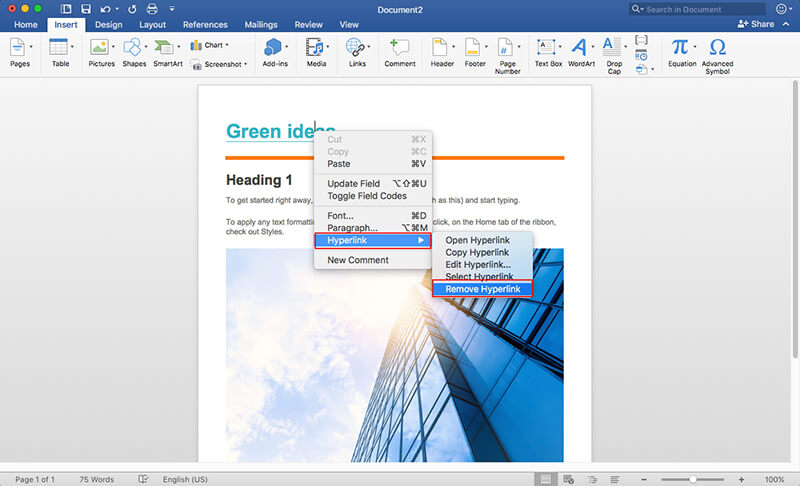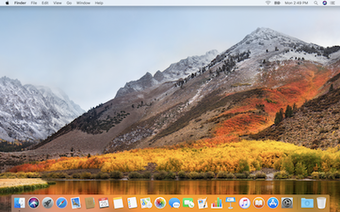
Mac Word Shortcut For Highlight
To use these shortcuts, you may have to change your Mac keyboard settings to change the Show Desktop shortcut for the key. Arrow Left: Move one character to the left: Arrow Right: Move one character to the right: Option + Arrow Left: Move one word to the left: Option + Arrow Right: Move one word to the right ⌘ + Arrow Up: Move one paragraph up ⌘ + Arrow Down.
Preview User Guide
You can use the highlight, underline, and strikethrough text tools to draw attention to text in a PDF. These marks are often used in conjunction with speech bubbles and notes.
Highlight, underline, or strike though text
In the Preview app on your Mac, open the PDF you want to change.
Do any of the following:
Quickly highlight, underline, or strike through text: Select text, click the down arrow next to the Highlight button , then choose a highlight color, underline, or strikethrough.
Use highlight mode: Click the Highlight button (so it turns blue), click the down arrow next to the Highlight button, then choose a highlight color, underline, or strikethrough. Now, whenever you select some text, the highlighting style you chose is automatically applied to the text.
To turn off highlighting, click the highlight tool again.
Remove a highlight, an underline, or a strikethrough: Control-click the text, then choose Remove Highlight from the shortcut menu.
View all the highlights in a PDF

In the Preview app on your Mac, open the PDF you want to change.
Choose View > Highlights and Notes (so Highlights and Notes has a checkmark next to it). Each section of highlighted text appears in the sidebar.
Mac OS X has its own keyboard shortcuts in addition to Word’s keyboard shortcuts. Collage maker mac. When you press a key or a key combination, Mac OS X searches first to see whether a task is assigned to that shortcut in Mac OS X system preferences. If you want to use a particular keyboard shortcut in Word, you have to check to make sure that your desired shortcut isn’t already assigned to do something else by Mac OS X.
Showing keyboard shortcuts
Apple has a lot of nice keyboard shortcuts already defined for Mac OS X, and you can easily get a complete list of them:
In Finder (the Desktop), choose Help→Mac Help.
Step for settings of Mac OS X Yosemite 10.10. While you are done with creating a new virtual machine for Mac OS X Yosemite. Therefore, you need some more settings for better performance and work of this operating system. RAM, Processor, motherboard, storage, USB 3.0 settings. We've previously shown you how to install OS X Mavericks on a virtual machine by using Niresh, which is great practice for installing Mac OS X on your actual computer.And now that Apple has released OS X Yosemite, it's only fitting that we show you how to install Yosemite in a virtual machine as well. Extract Mac OS X Yosemite. Create a New Virtual Machine. After Installing Vmware & Extracting mac OS X Yosemite, you need to create a Virtual machine for it. So, Open the VMware workstation Pro or Vmware Player. Once VMware Workstation Pro is launched, on the Home page select Create a New Virtual Machine. Assigning all processors on the Mac to the virtual machine results in extremely poor performance. Mac OS X must continue to perform background tasks even if no Mac applications are running. If you assign all processors to a virtual machine, this prevents important Mac tasks from being completed.

In the Ask a Question search box, type shortcuts and then press Return or Enter.
Help responds with a list of relevant topics.
Likewise, Word also has a generous assortment of keyboard shortcuts right from the start. The shortcuts in Word are available by searching Word’s Help for Keyboard Shortcuts. You can set up Word so that it automatically displays keyboard shortcuts in menus and toolbar ScreenTips:
In Word, choose View→Toolbars→Customize Toolbars and Menus from the menu bar.
On the Toolbars and Menus tab of the resultant dialog, select the Show Shortcut Keys in Screen Tips check box.
Click OK.
Making your own shortcuts
You can assign keyboard shortcuts to Word commands and change the ones that Microsoft assigned. Word doesn’t force you to stick with the default shortcuts. You can assign and reassign shortcuts as you wish. To access the Customize Keyboard dialog and set a keyboard shortcut, take these steps:
Choose Tools→Customize Keyboard.
In the Categories list, select a category, and in the Command list, choose a command.
To assign (or reassign) a keyboard shortcut for the selected command, type in a customized keyboard shortcut combination for the selected command and then click the Assign button.
Click OK twice.
Save a document with one or more custom shortcuts as a template so that when you open that template, the keyboard shortcuts you customized apply only to the documents created from that template.